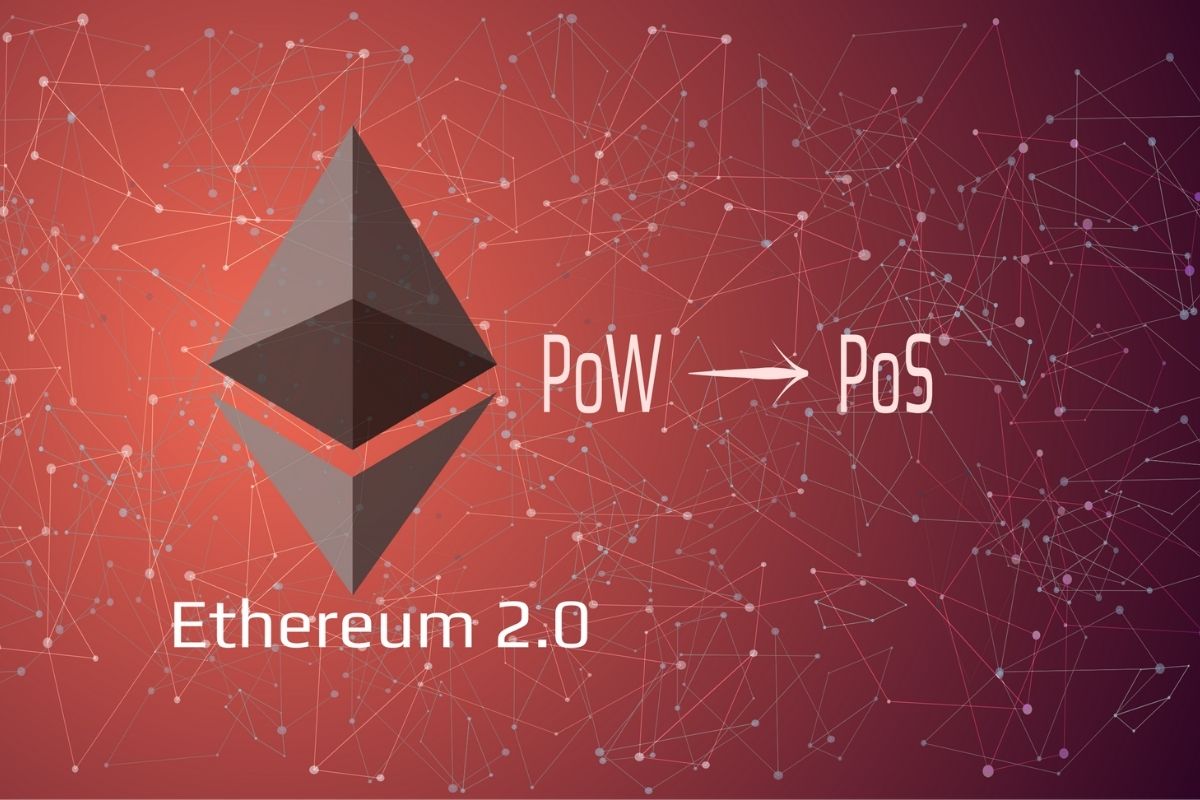ETH’s PoW to PoS shift: Global crypto impact
- April 7, 2022
- Jennifer Moore

Cryptocurrencies adhering to the Proof of Work consensus mechanism often draw the ire of environmentalists. They are highly resource-intensive consuming large amounts of energy for expediting crypto transactions. Ethereum, the world’s most widely used blockchain infrastructure, is shifting its infrastructure to a new consensus that promises to make a 99% decrease in energy consumption. In this article, we examine the impact of Ethereum’s transition to the Proof of Stake mechanism, and the upgrade’s consequent impact on the global crypto industry.
Quicker Transaction Verification
Digital assets often consume large amounts of energy for securing and verifying their networks. The underlying process is known as crypto mining, which is not only a process of adding or making new coins but also a validation process authorizing crypto transactions across blockchain networks and recording them in a distributed ledger.
In all its essence, blockchain utilizes distributed ledger technology comprising a digital ledger to keep track of each transaction within the network. All token assets and NFTs acquired within the network remain recorded within the ledger. The miners authenticate and update records of each transaction on the blockchain network.
The distributed ledger permits only authorized miners to validate and update crypto transactions, who are rewarded with tokens for offering their computational resources to the blockchain network. The Proof-of-Work mechanism ensures that only verified crypto miners can offer their resources for validating transactions. The consensus mechanism also secures the network from outside attacks.
Also Read: 10 Cryptocurrencies to ‘Bear’ Through the Next three quarters of 2022
The Need for PoS: Challenges presented by PoW
As explained above, mining consumes enormous amounts of power. The Ethereum network, as per Digiconomist, uses 112 TW-hours of electricity each year, an amount which is more than the total electricity consumption across Pakistan or the Philippines and equivalent to the Netherlands. An ETH transaction consumes more electricity than one hundred and fifty thousand VISA transactions. Bitcoin uses even more and consumes 137 TW-hours of annual electricity.
The PoW mechanism, first introduced as a concept for combating email spam in 1993, was reintroduced as an option for securing the Blockchain network by pseudonymous Bitcoin creator Satoshi Nakamoto in 2009. It works by utilizing all nodes(devices) in solving cryptographic puzzles. Miners race each other as the first one to solve the puzzle correctly gets a reward. This often leads to a competition where mining enterprises have built gigantic farms solely dedicated to crypto-mining. HIgher computational power(Hash Rate) translates to better mining, which often leads miners to combine their resources for higher chances of winning. The Proof-of-Stake is thus a necessary substitute for the power-intensive PoW mechanism.
Also Read: The Skyrocketing Number of Crypto Owners Live up to Predictions
Proof of Stake: The Art of Staking
The PoS mechanism was initially proposed in a Bitcoin talk forum as a solution for ending the crypto-mining competition in 2011. The process randomly nominates a node for transaction block validation. Miners in the PoS environment refer as Validators. Moreover, they task with forging new blocks for recording transactions.
Validators place the desired amount from their crypto assets at stake. Higher stakes result in more chances for users to forge a new block. A person keeping more at stake will have a proportionately better chance of winning the stake.
For those concerned with the possibility of recording fraudulent transactions, the PoS mechanism burns away the validator’s stake if they give the green light to incorrect transactions within the blockchain network. One of the significant drawbacks of the PoW mechanism was the 51% scenario- a situation where a group of miners obtains 51% of hashing power, effectively controlling the blockchain. PoS renders the possibility of fake transactions void by mandating stakes higher than their tentative block rewards. The PoS mechanism allows only a few validators to mine, thus doing away with much less computational energy consumption.
Wrapping Up
Despite all its merits, the PoS mechanism is not without flaws. To start things off, the mechanism favors wealthy validators in perpetuity allowing them to collect more transaction fees. Thereafter, get richer, and consequently improve their selection chances as a validator in the future. However, the mechanism is a much faster process, and less energy-intensive. One can closely observe the Ehereum’s transition to the PoS mechanism in the upcoming tears.
Categories
- AI (6)
- Altcoins (10)
- Banking (10)
- Bitcoin (132)
- Bitcoin ETF (11)
- Bitcoin Price (30)
- Blockchain (47)
- Brokering World Hunger Away (16)
- Business (7)
- CBDC (11)
- COVID-19 (3)
- Crypto ATMs (1)
- Crypto Banking (15)
- Crypto Bill (1)
- Crypto broker platform (26)
- Crypto Investment (3)
- Crypto Markets (3)
- Crypto Payment (26)
- Crypto Prices (1)
- Crypto Trading (88)
- Cryptocurrency (365)
- Cryptocurrency Exchange (95)
- Data Visualization (2)
- Decentralized Finance (7)
- DeFi Payment (9)
- DEX (3)
- Digital Currency (22)
- Ethereum (2)
- FAQ (6)
- Finance (24)
- Financial Equality (4)
- Financial Freedom (8)
- Forex (24)
- ICO (1)
- Investment (11)
- Mining (3)
- News (64)
- NFTs (2)
- P2P (1)
- PayBitoPro (606)
- PayBitoPro Coin Listing (6)
- PayBitoPro Exchange (2)
- Post COVID Digital Transformation (1)
- Press Release (130)
- Privacy & Security (3)
- Real Estate (1)
- Stablecoin (4)
- Technology (14)
- Uncategorized (2)
- US Presidential Election (2)
- Utility Coin (1)
- Web3 Wallets (1)
- White Label Crypto Broker Solution (1)
- White Label Crypto Exchange (6)





